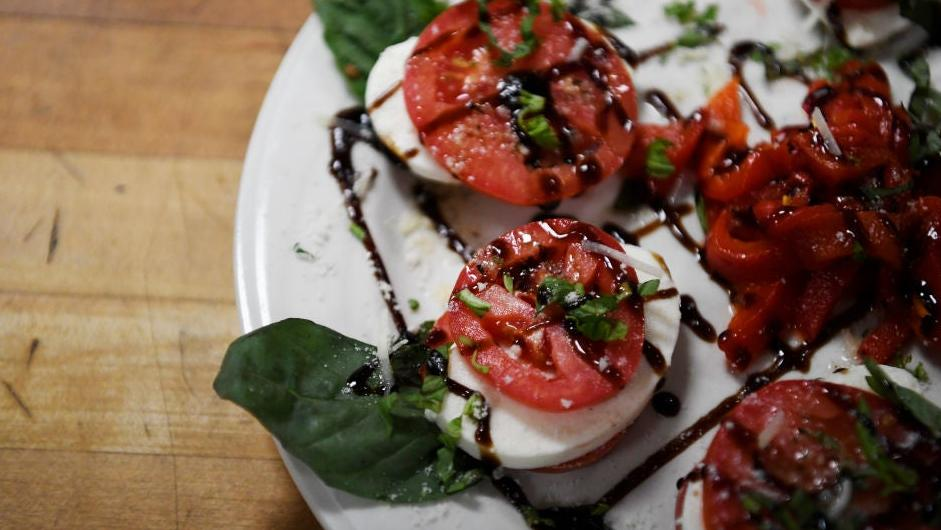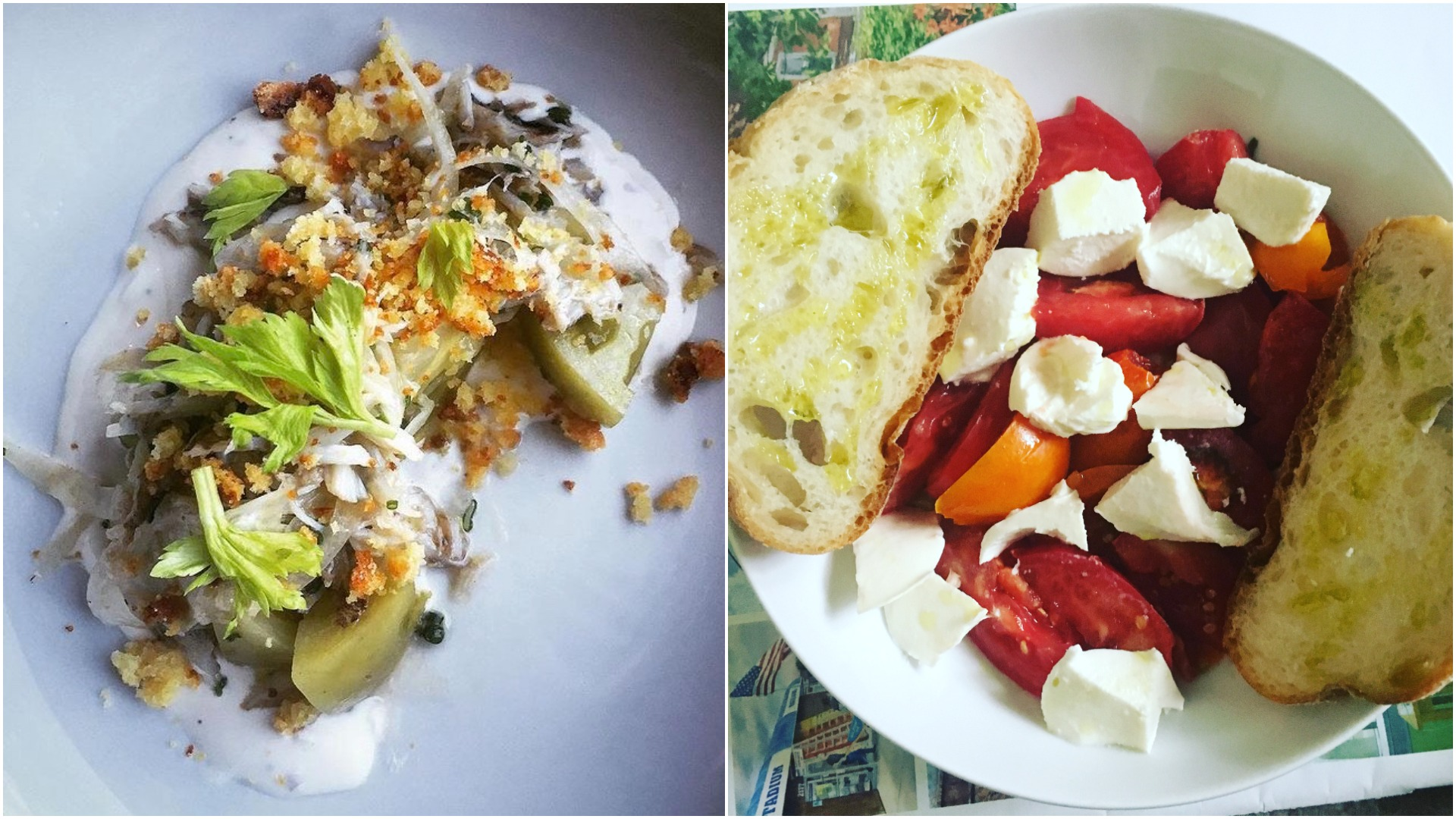How Do You Improve Upon Something As Perfect As Caprese Salad?
Chefs and writers offer some new twists on the summer classic.
Caprese salad, or insalata Caprese in Italian, allegedly has its roots in Italy following World War I. According to legend, a builder arranged fresh mozzarella, sliced tomatoes, and basil leaves as a patriotic tribute to the colors of the Italian flag. (That origin story might be a little suspect, since Italy at that time was a series of regions, without much fealty to the idea of a single country.)
Caprese salad really began to take off in the 1950s, when tourists flocked to the island of Capri, and found the salad to be a refreshing dish on hot summer days. I may be the only person in the world to have visited Capri and not eaten a Caprese salad there. But I've made up for that by ordering many in restaurants and assembling them at home.
A few years ago, I began to play around with the ingredients, sometimes adding bacon, throwing in raspberries and fresh herbs from my garden, and occasionally serving it chopped on top of greens, drizzled with balsamic vinegar. In talking to chefs and authors, I've learned that others are doing their own variations on the form. Here are some ideas for building a unique Caprese salad in your kitchen.
Go upscale with your ingredients
Gregorio DiMarco, known as Chef G in the Ann Arbor, Michigan, pop-up community, concocts his Caprese with upscale versions of the typical ingredients. He uses heirloom tomatoes from local grower Hindsight Farm, a balsamic emulsion, roasted bread, the freshest basil possible, and the key tweak: burrata instead of mozzarella. The creamy center of the mozzarella-based cheese blends with the balsamic to create a rich note.
Play around with fruit
DiMarco has another riff on Caprese that keeps the burrata and swaps in watermelon for the tomatoes, and adds cucumber for some crunch. He marinates his salad in lemon, mint, and sumac, before serving it with greens. It's a wonderful variation for miserably hot days, and the watermelon juice adds some sweetness. "Simple and fresh!" he says.
Swap in cottage cheese
Abra Berens, a chef based in Three Oaks, Michigan, is the author of Ruffage, a treatise on vegetables, and the soon-to-be-published Grist, which looks at all kinds of grains. Her Caprese starts with thick slabs of tomato, which she tops with cottage cheese, pesto, and chopped herbs. She finishes the dish with garlic-flavored or panko bread crumbs. If she doesn't have cottage cheese on hand, she uses ricotta, and mixes in a spoonful of heavy cream in order to loosen it.
Go with a hybrid approach
Virginia Willis, the Atlanta-based writer and culinary teacher, insists that cooks start with the best-quality ingredients they can find. "If one element is off, then the concept collapses," she says. Willis takes a hybrid view of what Caprese can be: along with tomatoes, mozzarella, and basil, she also tosses in toasted croutons made from sourdough, or cornbread, a nod to her Southern roots. "Is it Caprese? Panzanella? Modern chopped salad? Who cares what you call it," she says.
Make it handheld
Willis, who is known for her imaginative catering, offers a Caprese that doesn't require a knife and fork. She threads bocconcini, the little mozzarella balls, with cherry tomatoes and folded basil leaves onto cocktail skewers. Cooks can drizzle olive oil and balsamic on a serving platter (you may want to have napkins handy) or individually plate the skewers so guests can pick them up and nibble with a drink.
Try a peachy version
New Orleans chef Jason Goodenough kicks out the tomatoes and swaps in peaches, a Caprese riff that is as much a main dish as a salad. He adds chilled crabmeat, ramps (you can substitute another spicy green if they aren't available), burrata, and tempura-fried squash blossoms. He says this tastes best "when peaches are amazing," which is earlier down south than elsewhere, but a great use for late-summer fruit overall. Swap in plums if your peaches are finished.
Use green tomatoes
Goodenough's other Caprese variation involves pickled green tomatoes, shaved fennel, Louisiana crabmeat, honeyed ricotta impastata (a drier ricotta than the creamy kind sold in tubs), and crumbled cornbread on top. Goodenough made this salad at his most recent restaurant, Carrollton Market, which closed in January. "This was one of my all-time favorite dishes [there]," he says.
Or, just stick to the classics
If these variations sound too ambitious for you, you have one expert's permission to stick with the classic Caprese. Bob Bennett, executive chef at Zingerman's Roadhouse in Ann Arbor, says he sticks with top quality, locally sourced tomatoes, mozzarella made by Zingerman's Creamery, basil, and olive oil. "We are pretty excited by the traditional Caprese plate," Bennett says.

